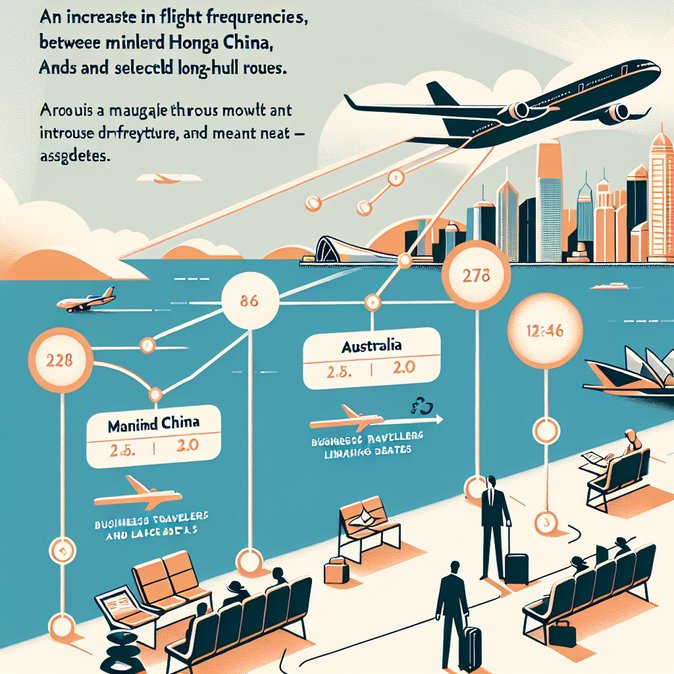
An internal scheduling bulletin published on 17 November shows Cathay Pacific making dozens of frequency and gauge changes across its Northern-Winter 2025/26 (NW25) timetable as the carrier continues a calibrated post-pandemic ramp-up. The AeroRoutes note highlights increases on high-demand mainland Chinese routes – Chengdu doubles to 13–14 weekly flights and Guangzhou moves to three-daily service – while long-haul markets such as Brisbane, Auckland and Dallas/Fort Worth also gain additional weekly rotations.
Conversely, selected leisure routes (e.g., Denpasar, Milan and Zurich) will see temporary cuts of one to two flights per week to balance aircraft utilisation during shoulder weeks. Despite the trimming, Cathay will field larger Airbus A350-1000s on busy trunk sectors such as Hong Kong–Paris and Hong Kong–Dallas, boosting overall seat capacity.
![Cathay Pacific Tweaks Winter Schedule, Adds Capacity on China and Australia Routes]()
For mobility managers, the headline is choice: the airline expects to operate more than 330 weekly round-trips between Hong Kong and the Chinese mainland this winter, offering expatriates and short-term assignees greater flexibility. The stepped-up Oceania frequencies should also ease pressure on premium-class availability, historically tight during the southern-summer holiday peak.
Companies should update travel policies to reflect the dynamic timetable – some bookings may be re-accommodated as frequencies flex. The expanded Guangzhou service, in particular, opens more same-day options for executives shuttling between Greater Bay Area factories and Hong Kong headquarters, potentially reducing overnight costs.
Conversely, selected leisure routes (e.g., Denpasar, Milan and Zurich) will see temporary cuts of one to two flights per week to balance aircraft utilisation during shoulder weeks. Despite the trimming, Cathay will field larger Airbus A350-1000s on busy trunk sectors such as Hong Kong–Paris and Hong Kong–Dallas, boosting overall seat capacity.

For mobility managers, the headline is choice: the airline expects to operate more than 330 weekly round-trips between Hong Kong and the Chinese mainland this winter, offering expatriates and short-term assignees greater flexibility. The stepped-up Oceania frequencies should also ease pressure on premium-class availability, historically tight during the southern-summer holiday peak.
Companies should update travel policies to reflect the dynamic timetable – some bookings may be re-accommodated as frequencies flex. The expanded Guangzhou service, in particular, opens more same-day options for executives shuttling between Greater Bay Area factories and Hong Kong headquarters, potentially reducing overnight costs.






